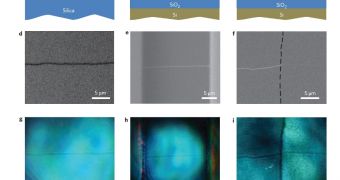A collaboration of researchers from the University of California in Berkeley (UCB) and the US Department of Energy's (DOE) Lawrence Berkeley National Laboratory (Berkeley Lab) announces the development of a technique that enables scientists to measure the structure and properties of individual carbon nanotubes. This is the first time such a capability has been demonstrated.
Previous studies trying to achieve correct characterization of carbon nanotubes (CNT) relied mostly on guesswork and assumptions, since the means to these hypothesis were unavailable. This is why the new method could lead to significant advances in the way science looks at nanotubes.
One of the reasons why these structures are so difficult to study accurately is that they are extremely small, with their diameter reaching only around 1/10,000 that of the human hair. Additionally, CNT come in several types, or species, each of which features different properties.
Through the newly developed technique, scientists at Berkeley Lab and UCB are now able to identify the species of CNT they are studying. Furthermore, they can gain additional insight into their optical, electronic and chemical properties when placed inside functional devices.
“Using a novel high-contrast polarization-based optical microscopy set-up, we’ve demonstrated video-rate imaging and in-situ spectroscopy of individual carbon nanotubes on various substrates and in functional devices,” Berkeley Lab Material Sciences Division physicist Feng Wang explains.
“For the first time, we can take images and spectra of individual nanotubes in a general environment, including on substrates or in functional devices, which should be a great tool for advancing nanotube technology,” he goes on to say.
Wang, a condensed matter physicist and a professor with the UCB Physics Department, is also a corresponding author on the paper detailing the technique. The work was published in the latest issue of the top scientific journal Nature Nanotechnology.
The research group believes that the new technique can potentially be used to study the properties of other nanoscale structures, including graphene nanoribbons, semiconductor nanowires and nanorods, and nanobiomaterials such as actin filaments.
The study was funded by the DOE Office of Science, the Center for Integrated Nanomechanical Systems and the US National Science Foundation.

 14 DAY TRIAL //
14 DAY TRIAL //